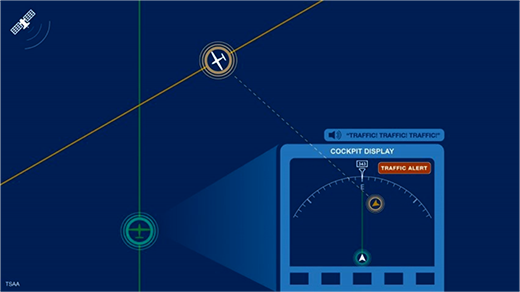ADS-B Traffic Advisory System (ATAS)
What it does
ATAS uses ADS-B to detect and alert pilots to potential traffic conflicts.
Benefits
This low-cost alerting capability for general aviation reduces the number of aircraft collisions.
Availability
ATAS standards are complete and ATAS is a required ADS-B In function for systems that are not interfaced with a TCAS system and comply with FAA Technical Standard Order - C195c.
How it works
ATAS monitors potential traffic conflicts by combining ADS-B tracking data with proximity-prediction algorithms. When it detects a conflict, ATAS sounds an audio alert (traffic callout). Conflicting aircraft are also highlighted on cockpit displays, when such displays are available in an aircraft.

After receiving an ATAS traffic alert, the pilot takes action appropriate to the operational rules in effect at the time. Unlike TCAS II systems, ATAS does not provide resolution advisories or maneuvering guidance.
ATAS was designed to operate without excessive nuisance alerts in the VFR traffic pattern at small general aviation airports, which is also where most general aviation collisions occur.
